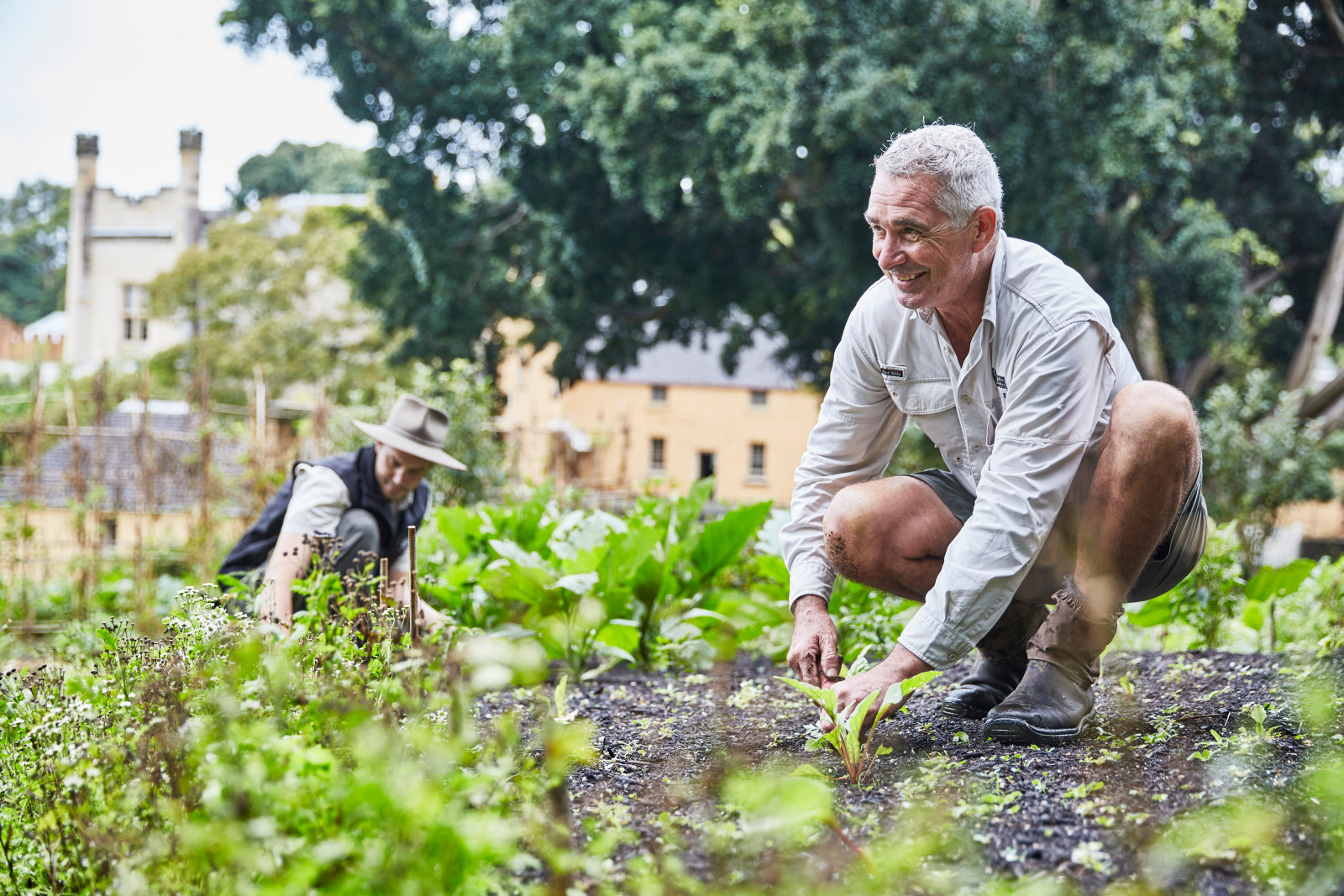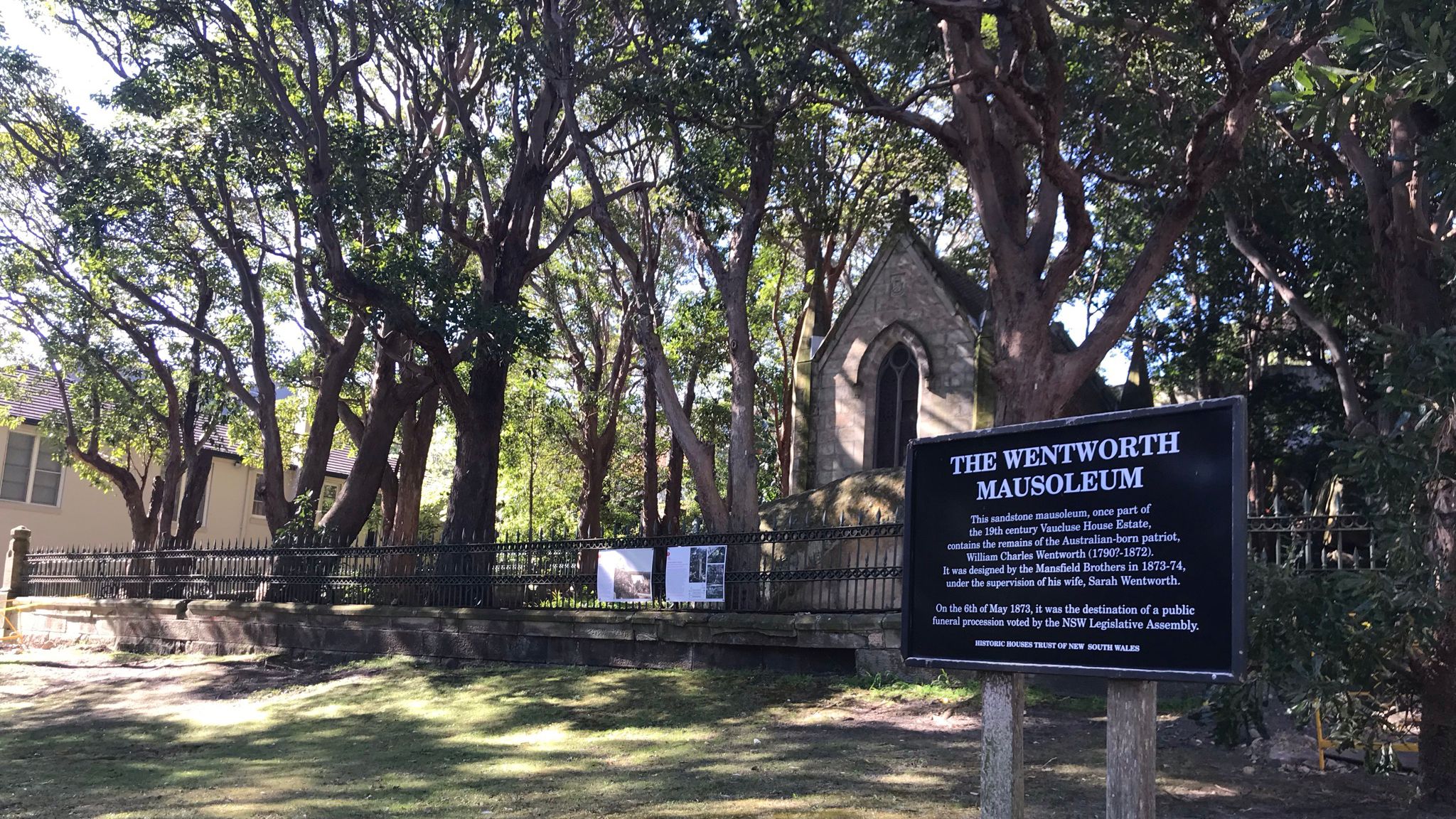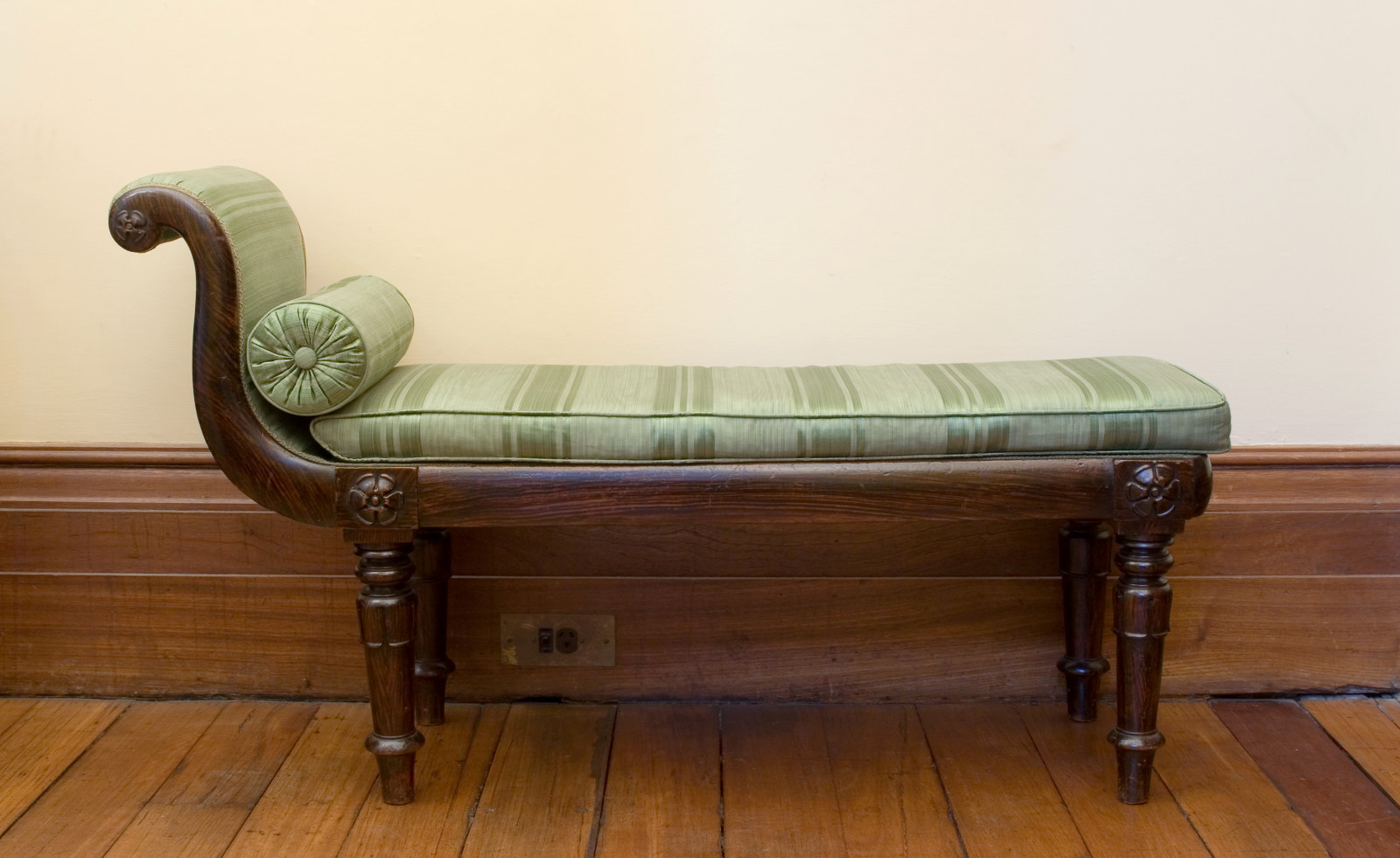Meet the movie maker
To launch a fundraising campaign to mark the centenary of Vaucluse House as a public museum, Museums of History NSW (then Sydney Living Museums) worked with Gregory Read from Paperbark Films.
The film follows two children as they discover the magic of Vaucluse House, leaving with a little piece of it for themselves.
We spoke with Greg about why he decided to support this campaign and the challenges of working with a heritage property.
1. You got married at Vaucluse House; can you tell me what is special about Vaucluse House to you and why you decided to get involved with this film project?
Vaucluse House is intrinsically linked to my family. I first discovered Vaucluse House when I visited it with my then fiancée, to watch her brother perform in D.H. Lawrence's play, Lady Chatterley's Lover. The play was set throughout the gardens, even the stables! As we walked about the gardens past the wisteria, sandstone and castellated parapets, we were hooked, so much so, that a few years later, we had our intimate garden wedding in the grounds! So naturally, when I was approached to create a film on Vaucluse House, I felt it would be an honour to help try and capture the wonder and beauty of this important part of Australia's heritage.
2. Who are Paperbark Films and what are some of the films you have worked on?
Paperbark Films is an active Australian film company that I established in 1990 to produce documentary and feature films. Our documentaries have explored a diverse range of subjects from Sydney's iconic Luna Park, to great Australian photographers Max Dupain and David Moore. Our feature films have also coursed a diverse field, from the psychological thriller, Like Minds, starring Eddie Redmayne, Toni Collette and Richard Roxburgh which I wrote and directed to The Eye of the Storm. The latter, was adapted from the book of the same name by Australia's Nobel Prize-winning author Patrick White. Renowned director Fred Schepisi came onboard for this project with Charlotte Rampling, Geoffrey Rush and Judy Davis in the leading roles.
3. The film follows two children, but also presents the house as a main character, how did you achieve this and why was it important?
I felt that I wanted to share my sense of excitement upon discovering Vaucluse House and then entering it for the first time. The house is so much more than a static cluster of rooms filled with dust-collecting objects. Vaucluse House lives and breathes layers of family stories which express themselves at every turn; in its red damask fabrics, its furniture, its wall paper and striking artwork, its every nook and cranny. What better way to experience this wonder than through the looking glass of children, a family? That we can experience this home as it was in the 1800s is a privilege that cannot be understated. It has taken the dedication of many people to make this valuable Australian story of Vaucluse House available to the public.
4. Obviously the house is very delicate and features some of the most precious items in the Vaucluse House collection including William C Wentworth’s very own pocket watch, alongside furniture and other objects that belonged to the Wentworth family. How is it different shooting in a heritage space and what are the measures you need to take to protect that space when filming while still ensuring you get the best shot?
We are extremely cognisant of the care that needs to be taken around such precious objects. We treat it with kid gloves and give to it, the respect its original owners would have. William C Wentworth would not want his pocket watch damaged, scratched or broken! Allowing only essential crew into the space and finding the least intrusive lighting to achieve the desired result is of the utmost importance. Having the generous assistance of the museum's staff is critical, making sure that if anything needs to be moved it can be done with total care. Good preparation and pre visualisation is the key. Time spent in pre-production will always help when dealing with the pressures on the shoot day.
5. How do you work with the child actors to get the amazing results we see in the film?
Casting is very important and both the children, Lucy Marin and Jonah Day were wonderful and a pleasure to work with. Preparation is key, in rehearsals the children learnt where they needed to be and the tone that I was after in the given shots. To encourage their most natural performances I allowed them to experience the space. I then used the camera and crew in the least intrusive way, allowing the lens to capture the moments I was after. My job was made easier by the setting of Vaucluse House itself evoking the story of its family to the actors.
6. Anything else you want to add?
Now, as my family continues a strong bond with Vaucluse House [when] my children take their turns at attending school excursions at Vaucluse House to experience the Wentworth family story, I hope that it will stay alive for their children and their children's children. Who knows - one of them might get married there!
Published on
Related

The coolest room in the house
What practical techniques can we learn from historical building design to minimise heat and energy consumption in our homes today?

Conservation
Vaucluse House kitchen garden
The Vaucluse House kitchen garden recently underwent a significant rejuvenation project to preserve the site and allow it to continue to be used as a valuable educational resource

Wentworth Mausoleum perimeter fence conservation
MHNSW is undertaking the first comprehensive conservation works to the fence surrounding the 1870s resting place of William Charles Wentworth

Designed with intent: colonial vs modernist chairs
This selection of furniture juxtaposes the old with the new: early 19th-century colonial seating and modernist styles made over a hundred years later